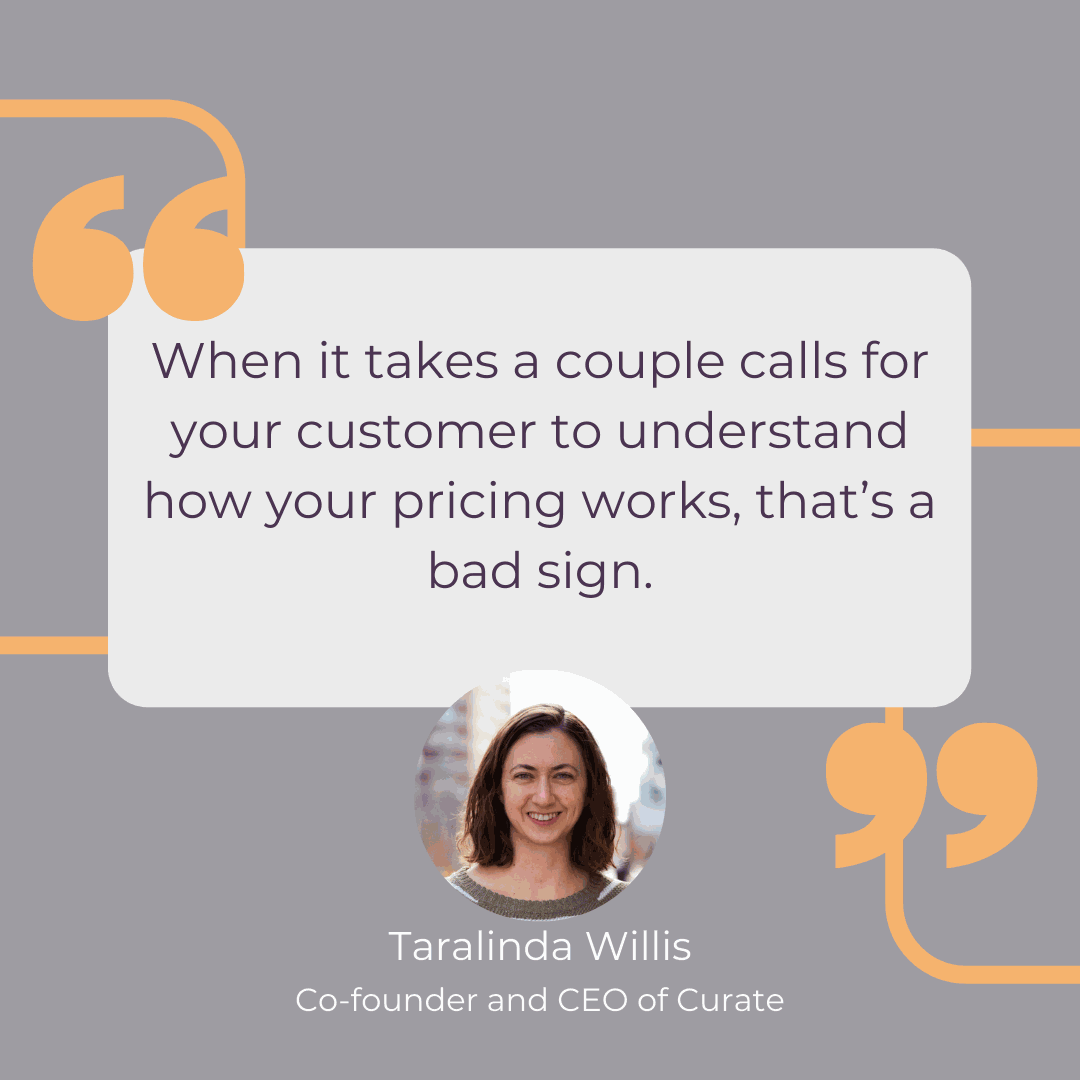
How to choose the right pricing model for your SaaS or product startup
By Olivia Barrow
No matter what industry you’re in or what kind of venture you’re building—from a web design business to a venture-backed software-as-a-service (SaaS) venture—figuring out the optimal pricing model for your product or service is hard.
There are so many variables that impact how much customers will be willing to pay for your product. When you’re launching a new venture, it’s hard to gather enough data to make a truly informed decision.
In talking to four people who know much more about it than I do, I heard a theme over and over: At some point, you have to make your best guess and go from there.
But even though you're bound to make some mistakes with your pricing model, there are several tips and best practices that will smooth out your journey to finding the revenue model that works for you and your business long-term.
In this article, you’ll hear lots of great insights from the following startup veterans:
Tania Ibarra, CPA, startup mentor, outsourced CFO and CEO of Step Up: Equity Matters
Taralinda Willis, CEO and co-founder of Curate
Scott Forester, CFO of entrepreneurial companies and founder of ThinkForward CFO (fractional CFO service)
Jason Weaver, serial entrepreneur and co-founder and CEO of AirDeck
We’ll cover the following topics:
How to establish pricing for your first few customers
Mistakes to avoid early on
How to tell if your pricing is off
How to change your pricing without losing customers
Value-based pricing is the holy grail. How do you get there?
Figuring out your correct pricing model is key to being able to scale
Let’s dig in!
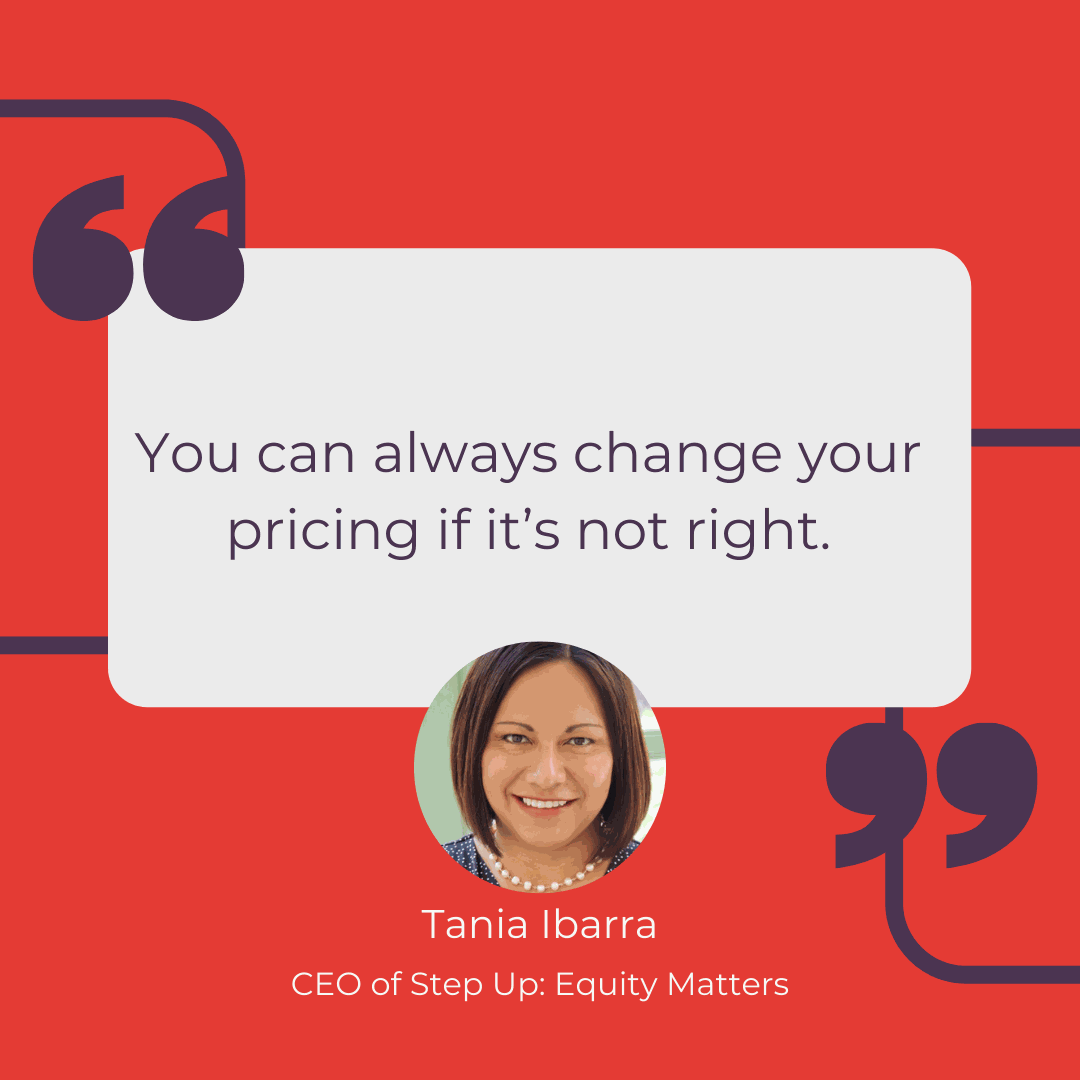
How to establish pricing for your first few customers
No one gets pricing right on the first try, no matter what industry they’re in. But if you approach your first foray into the market with the attitude of gathering data in an experiment, you’ll be emotionally prepared for the inevitable mistakes you’ll make.
“You can always change the pricing if it’s not right,” says Tania Ibarra.
With that caution in mind, there are a few best practices when it comes to picking your starting point with pricing.
Tips for service businesses and solopreneurs
For a service business, especially if you’re starting out as a freelancer or solopreneur doing something like writing, interior design, or web design, Ibarra says it’s best to start by calculating how much money you need or want to make in a year in order to have a sustainable business. Then work backward from that to figure out your minimum hourly rate.
But when you do that, make sure you factor in all of the non-billable hours you’ll have to put in.
“In services, it’s easy to say writing this article only took me two hours, but what about all of the other hours that go into your work?” Ibarra says. “Prospecting, billing, communicating with clients, professional training. You may not think it’s right to bill the client for that, but those are non-billable hours that you need to factor in as costs when providing a service in order to calculate the hourly rate that is necessary for you to survive.”
Tips for consumer products
With consumer products, it’s important to study the market and understand the price point of your competitors. That’s probably an indication of what consumers are willing to pay, but Scott Forester notes that there are opportunities to compete at a higher price point if you can offer enough added benefits, such as convenience.
Earlier in his career, Forester worked for a food company that made high-end hors d'oeuvres, which were flash frozen and then shipped around the country to be recooked at event venues. Forester says they tasted as good as something made on-site, and the price point was higher than making food on-site. But the value that attracted venues was the convenience, the consistency, and the fact that the company also helped them plan out their menus and food budget.
“They were the gold standard,” Forester says. “They weren’t selling on price. If you’re selling toward the higher end of the market, you have to explain why there’s value.”

Tips for software companies
If you’re building a software company, it’s important to study your competitors, but more often than not, software companies don’t have an obvious direct competitor. In many cases, that hole in the market is the reason the founder launched the company. So how do you determine what customers will be willing to pay for your software product?
Taralinda Willis says the key is to listen to your sales prospects and figure out how they categorize your product in their minds.
“I always try to figure out what bucket or comparison our customers are making from a product perspective,” she says. “Maybe I don’t think of it as that kind of product, but if they’re thinking about it as that, then that’s the budget bucket it goes into.”
Once you establish that baseline based on your competition, you need to figure out what levers you can pull to make customers pay more for your product. Those levers are often some combination of additional features, user seats, or higher usage limits, but Willis says it’s tough to figure out the right levers.
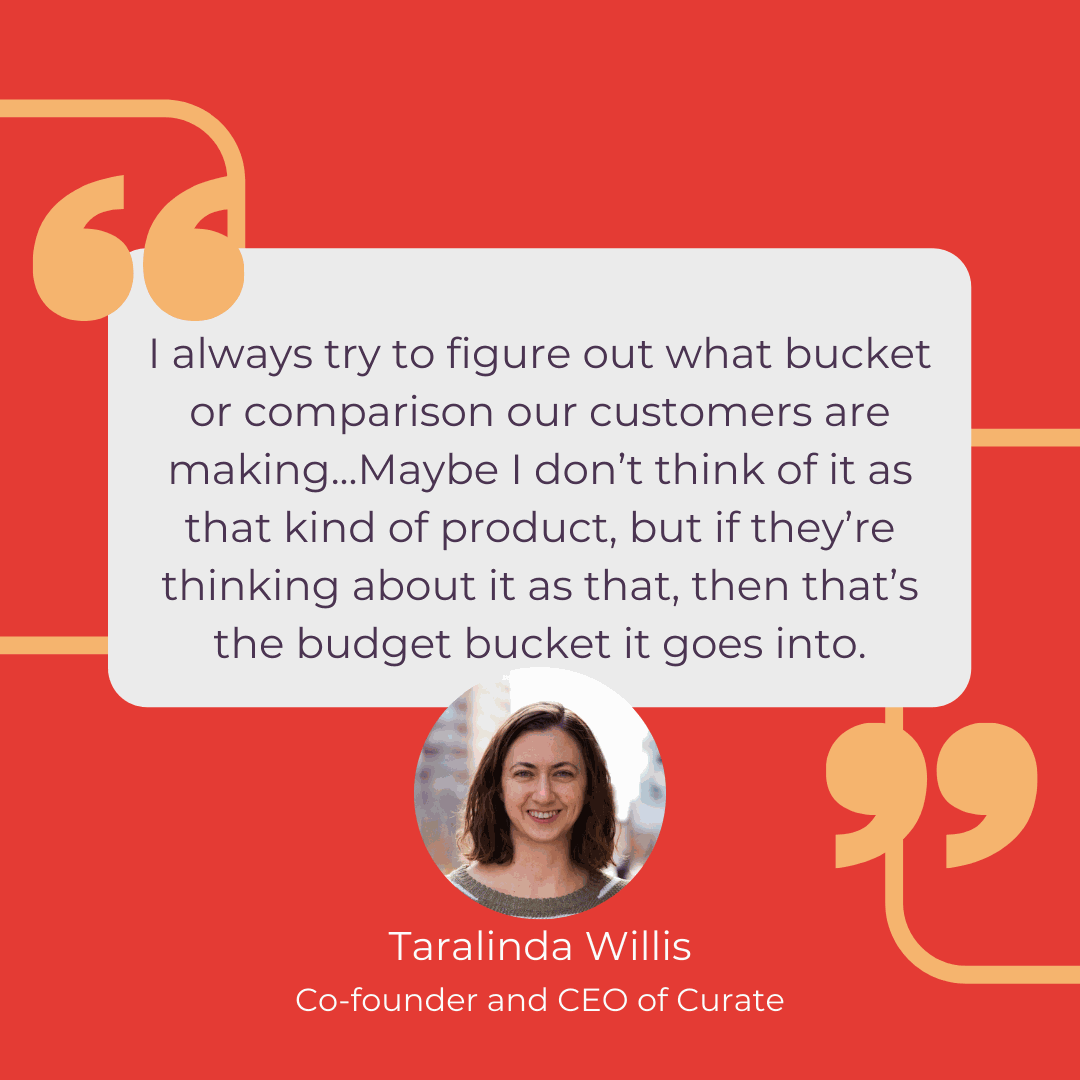
“What actually costs us money and what’s more challenging for us to do may or may not make sense to be a lever,” Willis says.
Mistakes to avoid early on
You’re going to make mistakes with your pricing when you’re getting started. But it can be helpful to know what seasoned entrepreneurs would avoid doing again.
Avoid focusing exclusively on user growth for too long
In any business, early customer feedback is extremely valuable for improving the product and making it scalable. But it’s especially important in software, where feedback from early users is a crucial part of turning your product from a duct-taped-together experiment into a polished product. Investors also tend to look at user growth as a key measure of a company’s viability in the long run.
But Willis says it’s easy to get too focused on user growth at the expense of revenue growth.
“Early on it was a priority for me that pricing wasn’t going to be a decision-maker for customers,” she says. “I didn’t want to lose out on deals because of pricing, because having users was so valuable. In hindsight, I think I had that mindset for too long. Because you anchor your price there and that’s where you anchor your value.”
Be careful using low pricing to enter the market as a service business
While there are definitely some instances where keeping your pricing low can serve you as a new entrant into the market—and the software example from above is one—it doesn’t work in every industry.
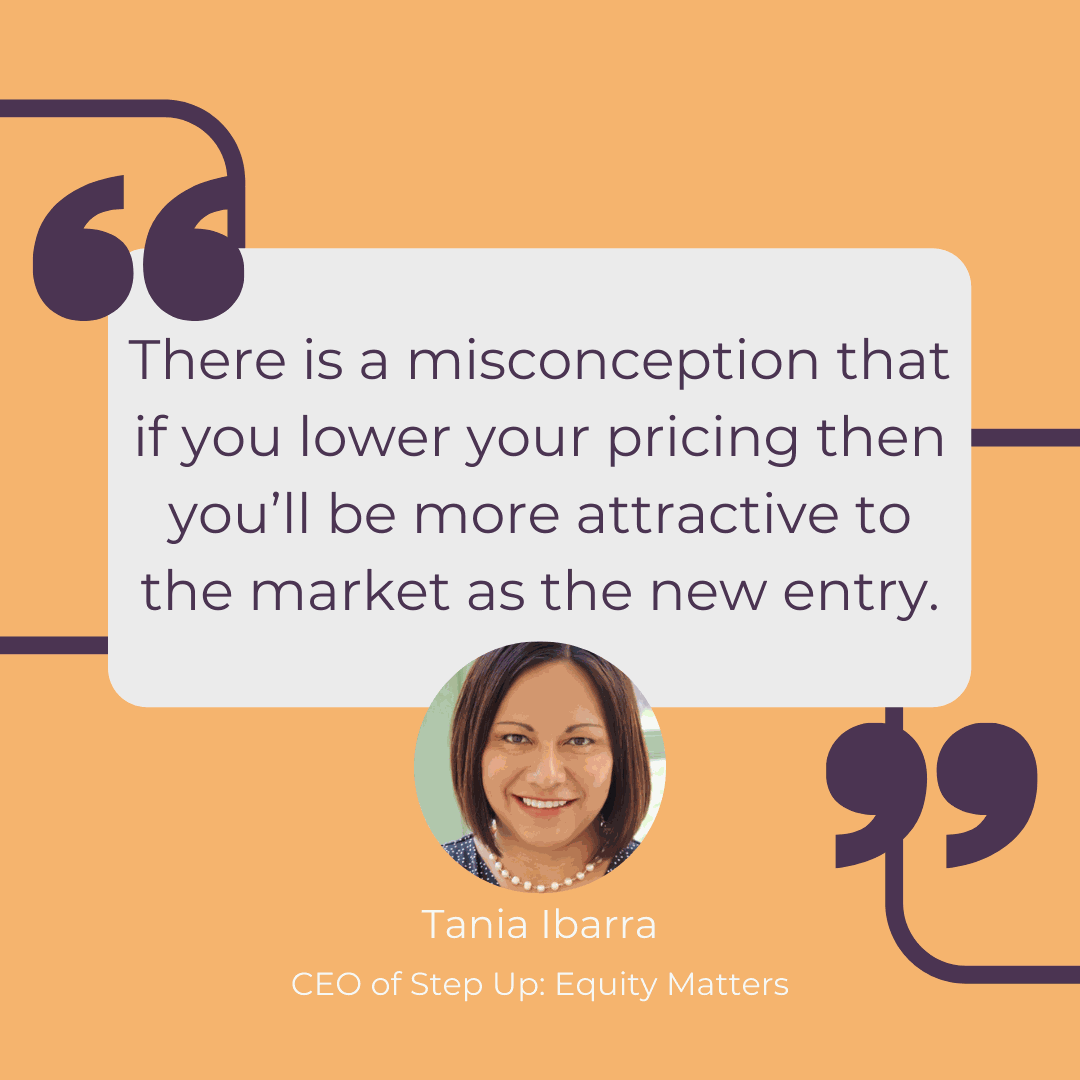
Ibarra cautions against doing this as a service business, because pricing is closely associated with quality in many professional services.
“There is a misconception that if you lower your pricing then you’ll be more attractive to the market as the new entry,” she says. “I think that’s true in some things but not in many. In professional services it just doesn’t work.”
Don’t forget to account for wasted time and materials
Another big mistake Ibarra says she sees often is that entrepreneurs fail to account for hidden costs associated with producing their product or offering their service. Too often, they don’t calculate the cost of prototyping a product, or developing a new feature on an existing product. And if they never account for that cost, they’ll never have a clear picture of their profitability.
Ibarra illustrates the point with a hypothetical clothing business that sells hand-made skirts.
Say it takes 35 minutes to make the first skirt in a new design. Eventually you will be able to sew that skirt in nine minutes, and crank out almost six skirts per hour. So you calculate the price of the skirt based on the cost of materials plus the cost of the labor at six skirts per hour. But if you never account for the time it took to prototype the new design, you’ll end up pricing the product too low. It’s a mistake that is easy to miss at small volumes, but becomes a huge barrier to scaling.
“Scaling requires efficient use of resources,” Ibarra says. “When entrepreneurs don’t include the cost recovery of prototyping into the pricing, it limits their ability to grow because they have not accounted for the resources that they need to grow. They have a false idea of their profitability.”
How to tell if your pricing is off
How do you know that the thing holding you back from hitting your revenue goals is your pricing model, and not your marketing strategies, or the value of the product itself?
Here are a few questions to ask yourself.
Have I truly invested in marketing, with the help of professionals, and exhausted every possible channel?
Marketing is hard. And until you have figured out the best channel for reaching your ideal customers, it’s expensive. Many cash-strapped startups are hesitant to invest much money in marketing until they’re at least breaking even, if not making a profit. If your sales are stalling, your pricing could be off, but you might also be trying to sell to the wrong audience, or maybe you’ve tapped out your local network and you need to make some smart marketing investments to reach audiences outside your personal circle.
“If you have done everything in marketing and you’re not getting the results you want with your pricing, then you probably need to make a change,” Ibarra says. “But if you haven’t done the marketing, it may not be your pricing.”
Are customers using the product?
This question applies most to software products, where it’s possible to track how much time customers spend using the product.
Jason Weaver, from AirDeck, shares a story of how a pricing change made a huge difference in the success of his product, and how customer behavior was the key to determining what change to make.
When he first launched AirDeck, he was using a “freemium” model. Customers could use a basic version for free, or upgrade to a paid version to get more features. But this model wasn’t producing enough revenue to sustain the business.
“Our free product was so good, no one was upgrading,” Weaver says. “So then I tried to downgrade the free product, and then upsell the good stuff. But then the user experience of the free product wasn’t good enough.”
After seeing almost zero conversions to the paid product with the freemium model, Weaver switched to a free 14-day trial of the full product.
“As soon as we did that, 75 percent of the people who were trying it started upgrading to the paid account.”
Weaver says he knew his pricing model was holding back his revenue because of the way customers used the free product when he first launched it.
“At first, I thought the product sucked or my marketing sucked,” he says. “But people were using the heck out of the product, just not paying. I wasn’t creating a compelling enough leap to the next level.”
Is your pricing so complex that it is slowing down your sales cycle?
Willis says it’s important to make sure your pricing model is straightforward enough that customers can easily digest it.
“When it takes a couple calls for your customer to understand how pricing works, that’s a bad sign,” she says. “That’s only slowing down your sales cycle, and no one wants a slower sales cycle.”
Willis says she can tell if her pricing is too complex by evaluating how quickly new sales team members grasp it. If they have a hard time understanding it, customers will struggle even more.
How to raise your pricing without losing loyal customers
So you jumped into the market with a price that you may or may not have pulled out of thin air, and now you have some customer feedback about the value of your product, and you want to raise your pricing. How do you do that without losing customers?
You have two main options:
Raise the price uniformly for all customers
Keep your earliest customers at their original rate, and raise the price for future customers
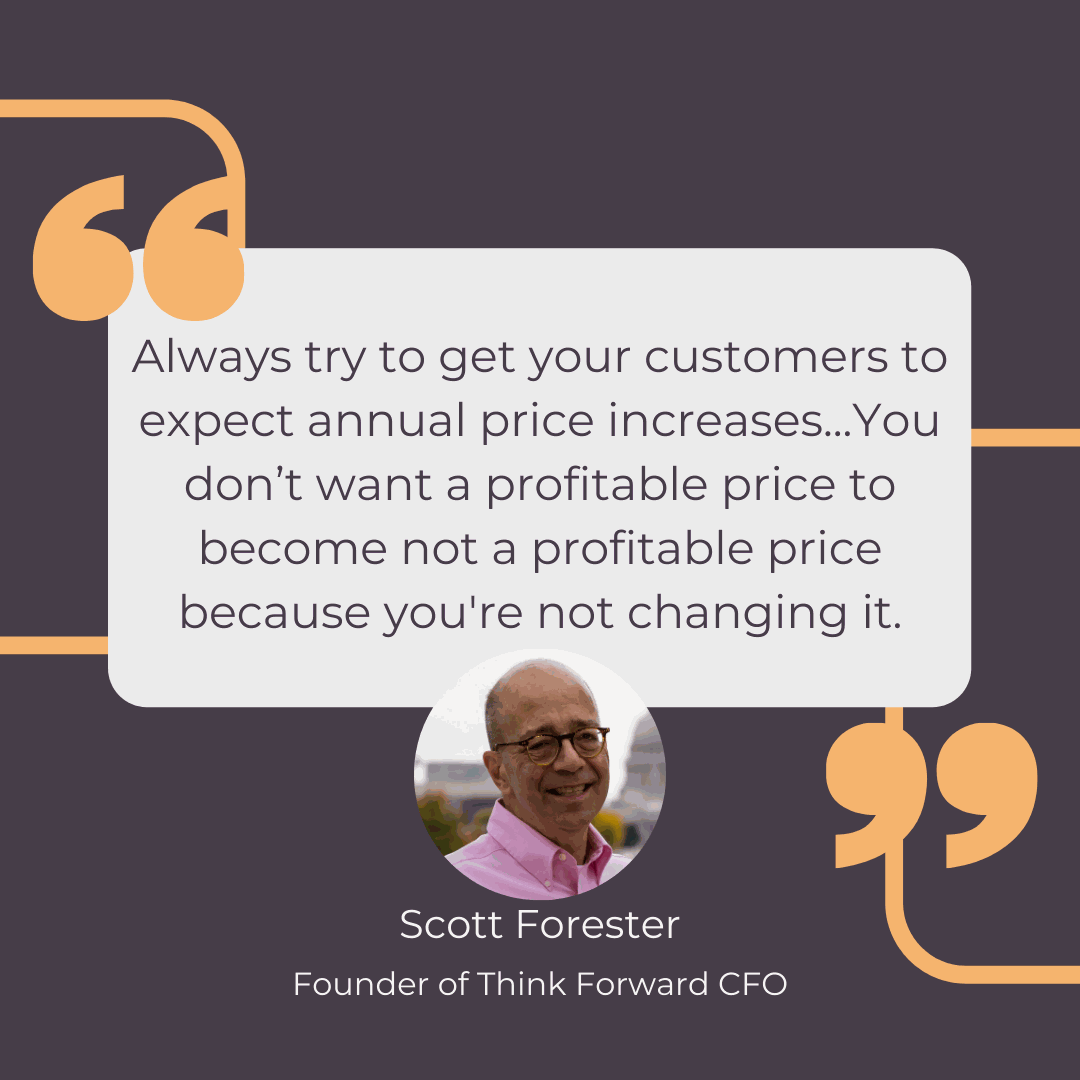
With each option, there are upsides and downsides to consider, as well as best practices.
If you opt to raise the price uniformly for all customers, make sure to give them a few months advance notice so that they can get budget approval, if necessary.
The downside of this option is that you’ll be limited to incremental increases because you’ve already anchored your value in the customer’s mind with your starting price. Too big of a jump will feel unfair, and will likely lead to high turnover when the new pricing takes effect.
However, Forester notes that in most industries, but especially consumer products, it’s a good practice to raise your prices every year.
“You should always be trying to get your customers to expect annual price increases,” Forester says. “[When I was] selling snack foods, it was important that every year come August, customers would expect a 2-to-3 percent price increase. For tech, most of your costs are people, and your people are getting raises. You don’t want a profitable price to become not a profitable price because you're not changing it.”
If you decide to grandfather in your earliest customers and introduce new pricing for all future customers, you can make a much bigger jump in pricing than if you change your pricing for everyone, and you can even experiment around with different quotes for different prospects.
With this option, every new customer could be an opportunity to try out a new pricing model, giving you a lot of feedback about what the market will bear and what your upper limit might be for each customer segment. However, you can run into problems if your customers start talking to each other, or if your sales team forgets what they originally quoted to a specific prospect.
Willis says she makes sure that new sales team members are comfortable selling a product that is changing all the time.
“They have to be committed to taking exceptional notes in the [customer relationship management software],” Willis says. “I rely on the fact that we’ll honor what we’ve told people in the past, even if we’re changing it for all of the next prospects.”
Value-based pricing is the holy grail. How do you get there?
Weaver says it took until his third startup for him to realize that the ultimate goal in pricing was selling based on value. For him, that looks like calculating how much his product will save the customer compared to what they’re doing right now.
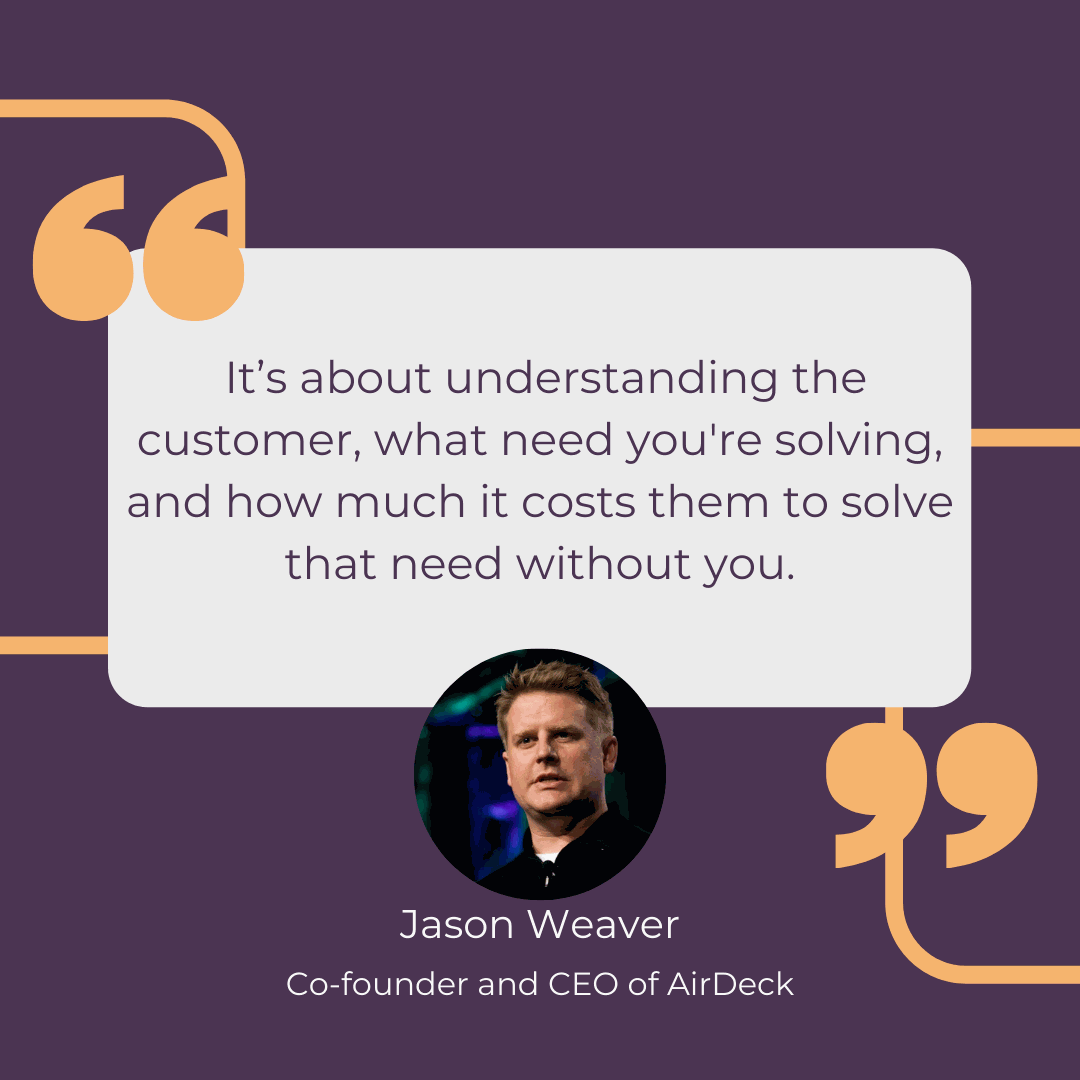
“I can calculate that by using AirDeck, you’ll probably have five to 10 fewer meetings per week,” he says. “So extrapolate that across a large organization, like Pepsi, and maybe you get $10 million in savings. Build your pricing based on that, rather than just saying it’s $20 per user.”
Forester offered another way to calculate your pricing based on value, based on his experience with a software startup.
“We started asking, what would someone have to pay to have this built custom? We knew we’d have to charge much less, but it was a benchmark. If it would cost $150,000 to build it, maybe we would be $50K the first year, and $30K each year after that.”
Figuring out your correct pricing model is key to being able to scale
To find a pricing model that works for your business, you have to be willing to fail. Trial and error is a necessary part of the process as you figure out how to position your product or service in a way that communicates its value.
But you also have to have discipline in the way you track your finances.
“There’s a difference in making an informed decision about not paying yourself and taking a loss, versus not tracking it at all and having the illusion of making money when you’re not capturing all of your expenses,” Ibarra says.
Accurately capturing all of the data around your business is the key to sustainability long-term, and is crucial for achieving your growth goals for your venture.

